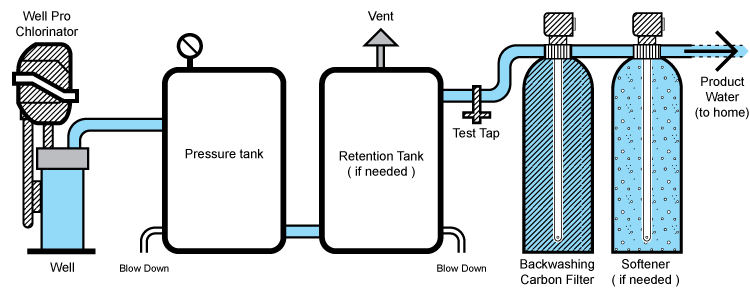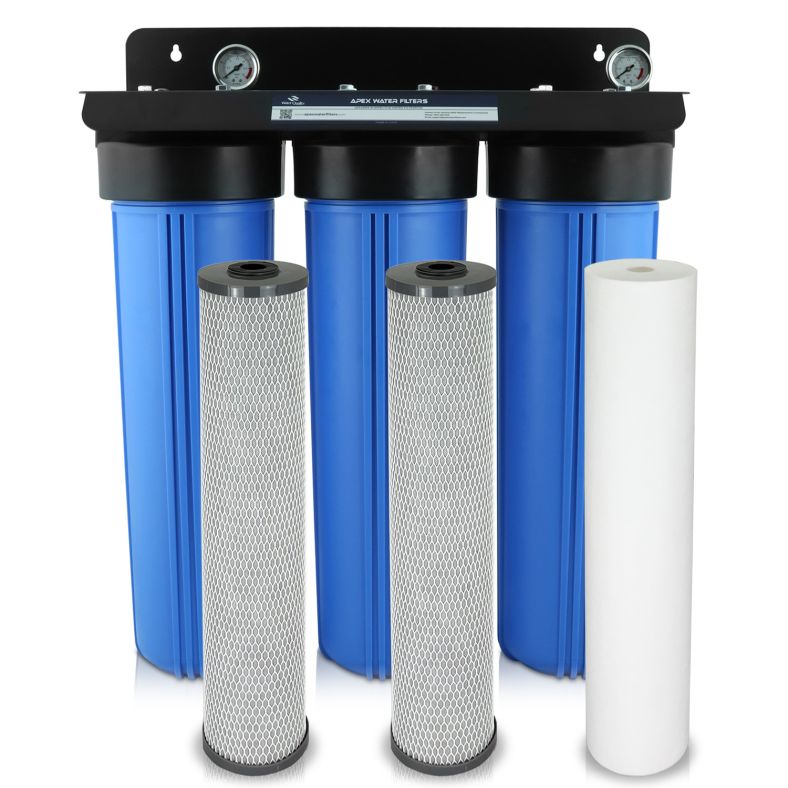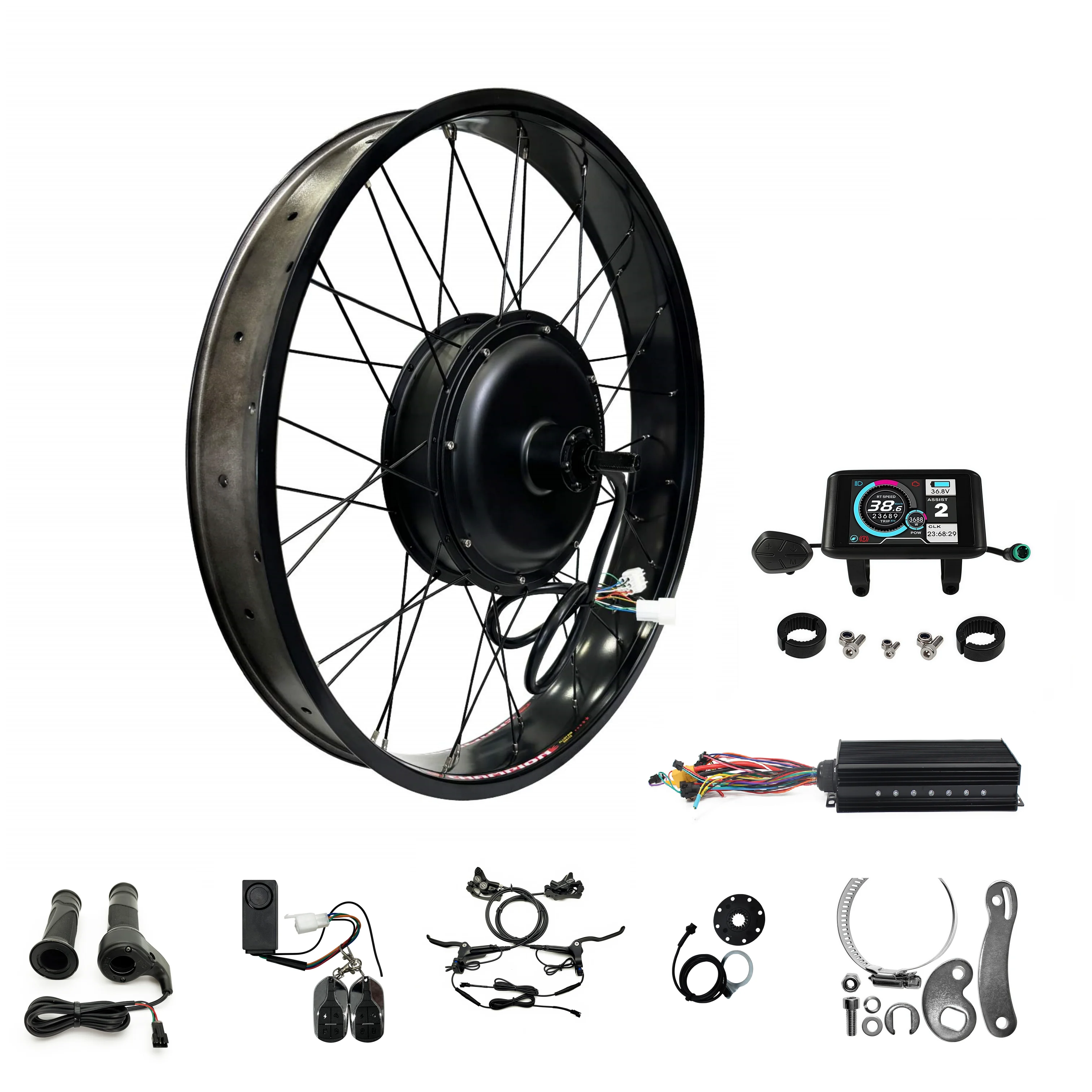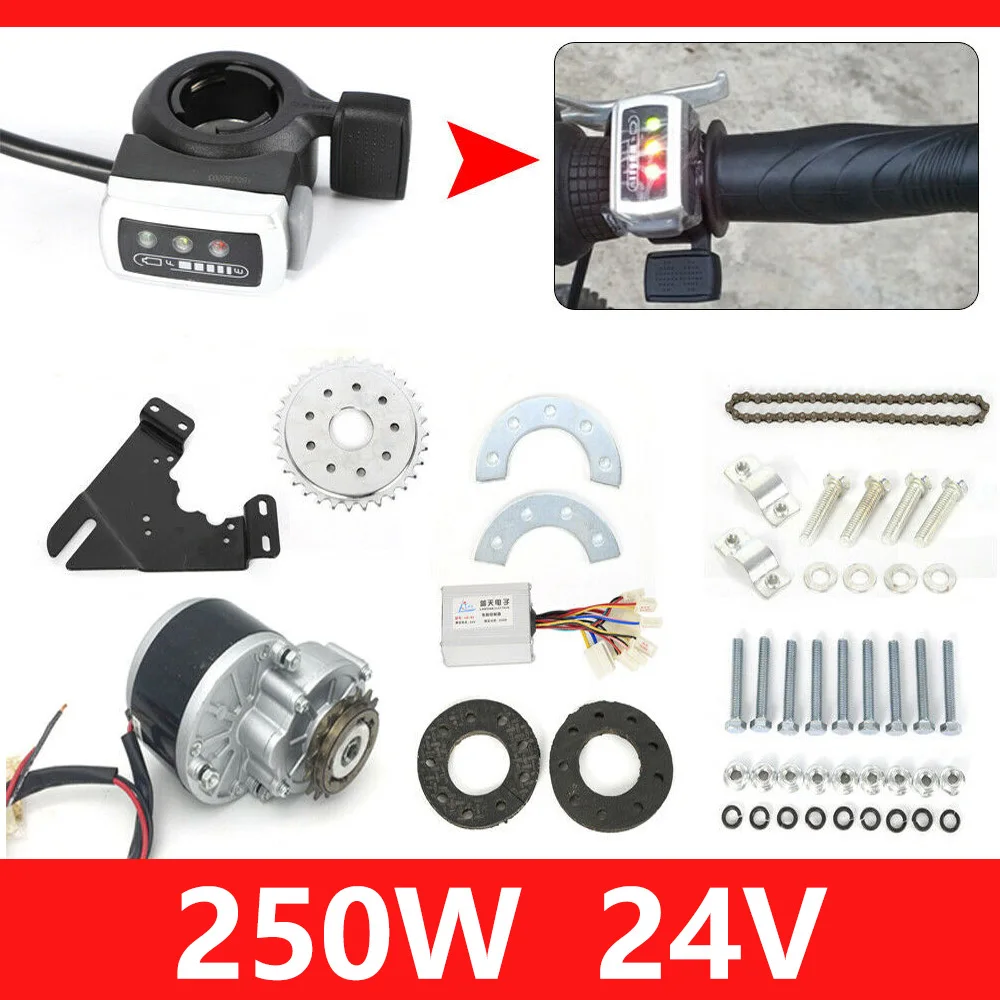Chlorine In Tap Water: Role And Effects
Ever noticed that faint, chemical tang in your glass of tap water? That subtle bite is chlorine at work, a common guardian against waterborne diseases. Utilities typically dose raw water with chlorine before it even reaches treatment facilities to control algae and bacteria. Then, after filtering out sediments and organic debris, they add chlorine again to maintain a disinfectant residual as the water travels through miles of pipes. This two-step chlorination process hinges on variables like pH, temperature, and contact time—all carefully calibrated to balance microbial kill rates with taste and odor concerns [1][4].
Chlorine’s chemistry also brings unintended benefits: as it oxidizes metals like iron and manganese, these elements precipitate out and can be removed more easily downstream. Yet when that same chlorine meets natural organic compounds in the water, it can form trace disinfection by-products such as trihalomethanes (THMs) and haloacetic acids (HAAs). While regulatory agencies set maximum contaminant levels for these DBPs, long-term exposure—even at low levels— raises questions about potential health effects [3][4].
At home, most of us address that pool-like hint of chlorine with simple carbon filters. These devices adsorb free chlorine, dramatically improving taste and smell. For tougher chloramines—formed by combining chlorine with ammonia—specialized catalytic carbon filters offer enhanced performance. Some households even pair activated carbon with reverse osmosis for membrane protection, while UV or chemical dechlorination steps are popular before cooking or maintaining aquariums. Whatever the method, removing chlorine boils down to striking a fresh-flavor compromise without sacrificing safety [2] and choosing the right chlorine removal filters.
I’m amazed by how a tiny dose of chlorine can both protect us from disease and challenge our taste buds, reminding me that every drop of tap water is the result of a careful dance between safety protocols and sensory expectations.
Health Risks Of Chlorinated Water
What if the very disinfectant guarding our taps secretly spawns chemicals that threaten our health? Chlorine is undeniably effective at killing bacteria and viruses in drinking water, but its reaction with naturally occurring organic matter leads to the formation of disinfection by-products. Among these, trihalomethanes (THMs) and haloacetic acids (HAAs) are the most studied—and worrisome—because of links to increased cancer risks and potential reproductive issues [4].
Research indicates that long-term exposure to elevated levels of DBPs may raise the risk of bladder and colorectal cancers, and emerging studies suggest potential developmental problems when expecting mothers ingest high concentrations [5]. Key factors influencing DBP formation include water temperature, pH, and the amount of organic precursors. In warmer months especially, higher temperatures accelerate reactions, potentially pushing by-product levels upward [1]. Dr. Emily Rodriguez, a veteran water-quality scientist, cautions: “Chlorination remains vital, but unchecked DBP levels can pose significant long-term health concerns.”
To protect families, point-of-use solutions such as activated carbon and reverse osmosis systems are often recommended; these can remove up to 90% of chlorine and DBPs before water reaches your glass [2]. I vividly recall the relief after installing a simple carbon filter under our kitchen sink—suddenly, water tasted clean, and that hidden chemical bite was gone, replaced by a crisp refreshment that felt safe and pure.
Common Filtration Technologies
Choosing the right filter can turn that sharp, chemical bite of tap water into a clean, refreshing sip you actually look forward to. At the foundation of most home systems is activated carbon: a porous material that traps chlorine molecules like a sponge, often removing up to 99% of free chlorine and significantly reducing by-product formation [2]. Next in line, KDF (Kinetic Degradation Fluxion) media—made of a copper-zinc alloy—initiates a redox reaction that transforms chlorine into harmless chloride ions while also tackling heavy metals.
For those seeking the deepest clean, reverse osmosis (RO) pushes water through a semi-permeable membrane, blocking microscopic contaminants down to 0.0001 microns. Since chlorine can degrade RO membranes, most systems include a carbon prefilter stage, marrying the strength of both technologies [3]. This multi-barrier approach ensures nearly all bacteria, chemicals, and chlorine derivatives are stripped away, delivering water so pure that ice cubes look like crystal prisms. Dive deeper into benefits and design considerations in our detailed exploration of understanding reverse osmosis filtration.
Activated Carbon: How It Works
Imagine turning chlorine-laced tap water into a crisp, fresh drink that feels like pure spring water. Activated carbon filters achieve this by leveraging a highly porous carbon matrix. Picture a kitchen sponge with billions of tiny nooks: as water flows through, chlorine molecules adhere to these surfaces and get trapped, preventing them from ever reaching your cup [2]. Simultaneously, this adsorption process captures small amounts of organic by-products, further improving aroma and taste.
Granular activated carbon (GAC) studies show removal efficiencies over 98% for free chlorine under typical household flow rates, leaving behind a neutral pH and a noticeably smoother flavor [4]. After installing an under-sink activated carbon unit in my own home, I noticed a faint sweetness even in plain water—and my morning coffee lost its aftertaste entirely. For those curious about installation options, our guide to under-sink kitchen filters covers models, flow rates, and cartridge lifespans in detail.
Innovative Filtration Technologies: Catalytic Carbon And KDF
Feel the difference clean water makes with next-gen filters that tackle both chlorine and its stubborn by-products head-on. Catalytic carbon stands out for homes contending with chloramines—formed when utilities switch from free chlorine to chloramine for longer-lasting residuals. Thanks to an enhanced surface area and specialized catalytic sites, it can remove chloramines up to 40% faster than standard activated carbon [2]. By converting chloramines into harmless compounds, catalytic carbon filters preserve plumbing integrity and eliminate that persistent chemical smell.

KDF media, composed of copper-zinc alloy granules, uses a redox reaction to reduce free chlorine and heavy metals, while also creating an environment that inhibits bacterial growth within the filter bed [3]. Homeowners often report silkier-feeling water within days—“My skin felt smoother and my dishes sparkled,” shared Jenna L., a recent KDF convert. When combined in a multi-stage setup, catalytic carbon and KDF can slash DBP formation by over 70%, making them a powerful duo for whole-house systems [1].
Point-of-Use vs Whole-House Filters
Deciding between point-of-use and whole-house filters can feel overwhelming, but understanding performance and cost helps clarify the choice. Point-of-use systems, like under-sink RO or carbon filters, deliver ultra-pure water at a single tap, removing 95–99% of contaminants while enhancing taste and odor. These compact units are perfect for drinking and cooking, though they leave other faucets untreated. For homeowners who want targeted freshness, portable counter-top models can be swapped in minutes.
Whole-house installations treat water at the main inlet, ensuring every faucet and appliance benefits from filtration. Their activated or catalytic carbon stages handle chlorine, chloramine, and sediment effectively at coarser micron ratings (5–20 microns), focusing on chemical removal and scale control rather than ultra-fine particulate filtration. While these systems require a larger upfront investment—often $1,200–$3,000 installed—they protect plumbing, reduce soap scum, and deliver soft-feeling water homewide. In my case, upgrading to a house-wide filter immediately reduced mineral spots in the bathroom and made laundry detergent more effective.
DIY Vs Professional Installation
Deciding whether to tackle your water filter install yourself or call in a pro can feel daunting—but knowing your limits is key. Simple units like faucet-mounted filters or pitcher systems often come with snap-on fittings and user-friendly guides, making them weekend-DIY projects for those armed with a screwdriver and some plumber’s tape. I once swapped out a basic carbon cartridge in under 20 minutes, no leaks, no fuss.

On the flip side, under-sink RO or whole-house systems involve cutting into water lines, mounting heavy components, and ensuring leak-proof seals—tasks that, if botched, can lead to water damage or voided warranties. Certified technicians bring expertise on permits, code compliance, and post-install performance testing, including monitoring flow rates and chlorine residuals [4]. While a professional install costs more upfront, the peace of mind and warranty coverage often justify the expense for complex setups or busy households.
Maintenance and Filter Replacement
Fresh filters and simple flushes can add years to your system while keeping every drop tasting like a mountain spring. When you first install or replace a filter, always run several gallons of water through the system to purge air and loose carbon dust—this initial flush prevents odd tastes or odors from lingering cartridges [1].
Activated carbon cartridges generally need swapping every six months or after about 600 gallons to maintain 95% removal efficiency. I noticed a marked boost in clarity and flavor the moment I stuck to this schedule [2]. For RO systems, pre-filter changes and monthly membrane flushes are crucial; neglecting these steps allows chlorine to slip past and degrade the fine membrane, leading to costly replacements [3].
Eco-Friendly Approaches To Chlorine Filtration
Clean water doesn’t have to cost the earth—nature offers clever tricks to keep chlorine and our planet safe. Activated carbon crafted from coconut shells or nutshells captures chlorine molecules through adsorption, producing no harmful by-products and fully biodegradable at end-of-life [2]. These plant-based carbons often repurpose agricultural waste, turning what would be discarded material into powerful filters.
Beyond standard carbon, catalytic carbon filters employ greener activation methods that consume less energy and effectively tackle chloramines. Some innovators even combine UV-LED reactors powered by solar panels to break down chlorine without chemicals, while biochar filters made from recycled wood chips provide a low-cost, low-carbon solution for off-grid homes. Such eco-centric approaches prove you can maintain pristine water quality and protect the environment in one simple step.
Understanding Chlorination and Filtration
Understanding how chlorine moves from a powerful disinfectant to a removable nuisance truly changes the way we see every sip. Chlorination has safeguarded drinking water for over a century, wielding chlorine to annihilate bacteria, viruses, and protozoan cysts before they reach our taps [1][4]. Yet when chlorine meets organic matter, tiny by-products form, reminding us that every treatment choice carries trade-offs in taste, safety, and cost.
Whether you opt for a simple pitcher, a point-of-use under-sink system, or a whole-house installation, the goal remains the same: protect loved ones from unseen risks while preserving that fresh, clean taste we all crave. Dive into our guide on chlorine removal filters to match the perfect solution to your home’s unique water profile, and rest easy knowing every drop is working hard to keep you safe.
Citations
“`html
Complete Top Picks Comparison – 20 Products
| Product | Source | Price | Rating | Image | Buy |
|---|---|---|---|---|---|
| Waterdrop WD-PF-01A Plus NSF Certified Replacement Filters for All Waterdrop Pitcher and Dispenser Filtration System, Reduces PFAS, PFOA/PFOS, Last Up to 2 Months or 200 Gallons (2 Packs) | Amazon | $25.99 | ★★★★★ (4.7) |  | Buy on Amazon |
| WK18 Under Sink Water Filter System, 18000 Gallons Under Counter Water Filter Direct Connect Under Sink Filtration System, Reduces Lead, Chlorine, Bad Taste & Odor, NSF Certified | Amazon | $39.00 | ★★★★☆ (4.3) |  | Buy on Amazon |
| Waterdrop 10UA Under Sink Water Filter System, Reduces PFAS, PFOA/PFOS, Lead, Chlorine, Bad Taste & Odor, Under Counter Water Filter Direct Connect to Kitchen Faucet, NSF/ANSI 42 Certified, 8K Gallons | Amazon | $51.99 | ★★★★☆ (4.5) |  | Buy on Amazon |
| Waterdrop Under Sink Water Filter, Under Sink Water Filtration System, 2 Years or 16K Gallons, 0.01 Micron Ultra Filtration for Baçtёria Reduction, Reduces Lead, Chlorine | Amazon | $74.99 | ★★★★☆ (4.5) |  | Buy on Amazon |
| Under Sink Water Filter for Sink Faucet by CuZn, 5 Year Filtration Life, Reduces PFAs, PFOS, Lead, Chlorine, Improves Taste of Tap Water with NSF/ANSI 42 & 372 Certified High Performance | Amazon | $150.05 | ★★★★★ (4.6) |  | Buy on Amazon |
| ICEPURE Under Sink Water Filter System, 3 Years or 22000 Gallons Ultra High Life NSF/ANSI 42 Certified, Removes Heavy Metals,Chlorine,Direct Connect Under Counter Drinking Water System, USA Tech | Amazon | $62.99 | ★★★★☆ (4.5) |  | Buy on Amazon |
| 3M Aqua-Pure Replacement Filter C-Complete, for use with AP Easy Complete System, NSF Certified Reduces Chlorine Taste and Odor, Sediment, Asbestos, Cyst, Lead, Mercury, Select VOCs. 750 gallons. | Amazon | $89.35 | ★★★★☆ (4.5) |  | Buy on Amazon |
| Cobbe Filtered Shower Head with Handheld – Filters Over 99% Of Chlorine – 2.0 Carbon Shower Head Filter System – Water Softener Filters Beads for Hard Water – Reduces Dry Itchy Skin, Chrome | Amazon | $39.99 | ★★★★☆ (4.3) |  | Buy on Amazon |
| iSpring WGB21B 2-Stage Whole House Water Filtration System, with 10″ x 4.5″ Sediment CTO(Chlorine, Taste, and Odor) Filter, 1″ Inlet/Outlet | Amazon | $150.00 | ★★★★★ (4.6) |  | Buy on Amazon |
| Waterdrop TSA 8 Layer Under Sink Water Filter System, Under Sink Water Filtration System, Reduces PFAS, PFOA/PFOS, Fluoride, Chlorine, Bad Taste & Odor, NSF/ANSI 42 Certified Element, USA Tech | Amazon | $119.99 | ★★★★☆ (4.5) |  | Buy on Amazon |
| eBike 48V-72V 20/24/26×4.0″ 2000W-3000W High Power Speed Fat Wheel Conversion Kits | AliExpress | $549.00 USD | ★☆☆☆☆ (0.0) |  | Buy on AliExpress |
| 48V 2000W Electric Fat Bike Kit 20 24 26inch 4.0Tyre Brushless Non-gear Rear Hub Motor Wheel Dropout 190mm For Snow eBike kit | AliExpress | $179.07 USD | ★★★★☆ (4.0) |  | Buy on AliExpress |
| Ebike Conversion Kit 72V 3000W Brushless Gearless Rear Rotate Hub Motor Wheel 20/26/27.5/29inch For Electric Bike Conversion Kit | AliExpress | $170.73 USD | ★☆☆☆☆ (0.0) |  | Buy on AliExpress |
| 24V 250W Brushed Motor Electric Conversion Kit for Common Bike – Thumb Throttle | AliExpress | $72.47 USD | ★★★★★ (5.0) |  | Buy on AliExpress |
| 2023 New Ebike Display Display Screen 48-72V E-Bike Electric Bike Scooter LCD Display Motor Speedmeter Approx 25Cm | AliExpress | $9.45 USD | ★★★★★ (4.8) |  | Buy on AliExpress |
| 700C Electric Bike Coversion Kit 1500/2000W Brusheless Gearless Motor Wheel with 13/20AH Lithium Battery Ebike Kit for Adults | AliExpress | $163.86 USD | ★☆☆☆☆ (0.0) |  | Buy on AliExpress |
| Tongsheng TSDZ2B OSF Open Source 36V 500W 48V 52V 750W Mid Drive Motor Electric Bike Torque Sensor Engine Ebike Conversion Kit | AliExpress | $327.46 USD | ★☆☆☆☆ (0.0) |  | Buy on AliExpress |
| Electric bike Conversion Kit 72V5000W Rear Rotate Fat EBike Kit e-bike hub motor Wheel Kit 20 24 26 * 4.0 Rear Fork 170mm | AliExpress | $210.22 USD | ★☆☆☆☆ (0.0) |  | Buy on AliExpress |
| 52V 2000W Electric Bike Conversion Kit 20/26/27.5/29 inch Ebike Brushless Gearless Rear Hub Motor Wheel For Ebike Conversion Kit | AliExpress | $143.75 USD | ★★★★★ (5.0) |  | Buy on AliExpress |
| Electric Fat Bike Conversion Kit 72V 3000W 4.0Tyre Rear Rotate Brushless Hub Motor Wheel Dropout 170mm for 20 24 26in Snow Bike | AliExpress | $192.37 USD | ★☆☆☆☆ (0.0) |  | Buy on AliExpress |
“`

